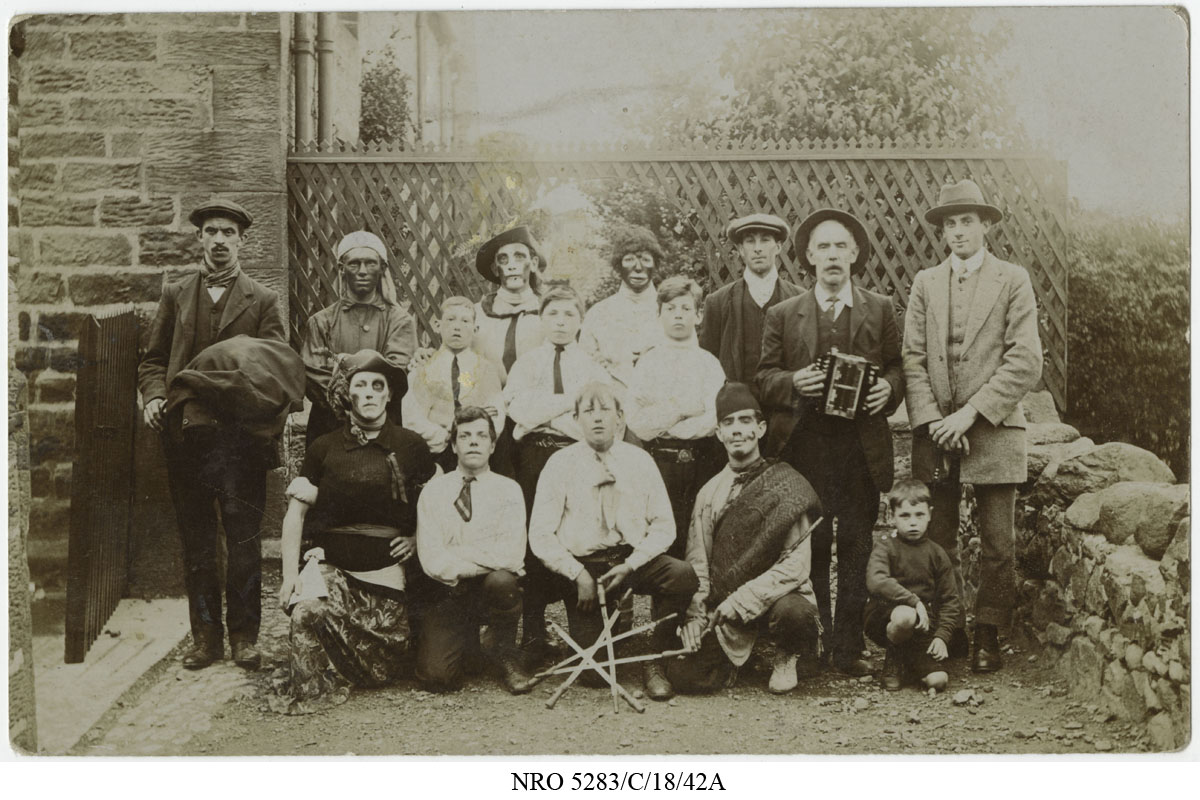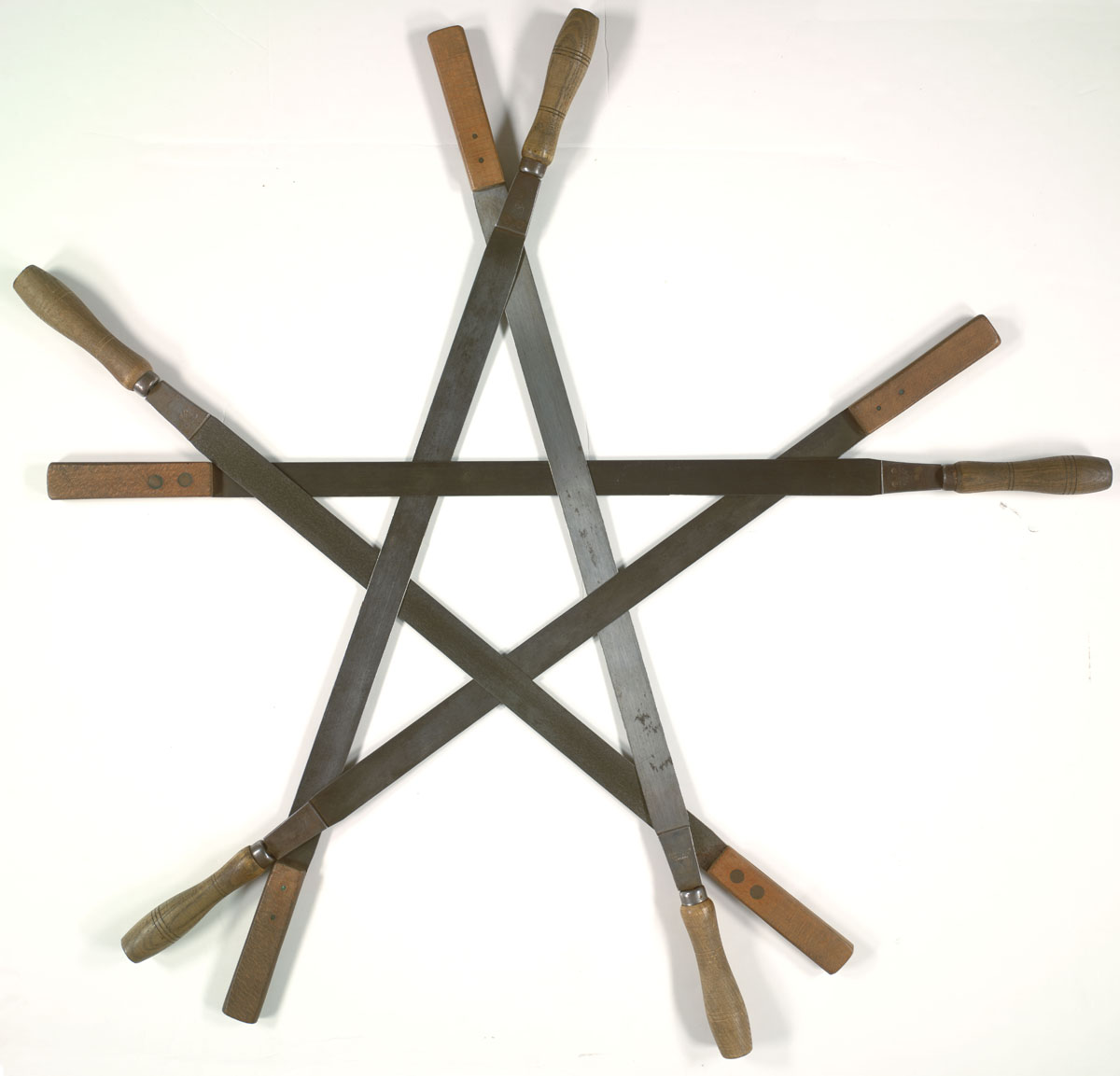
The image above is one of the earliest examples of a Sword Dancing ‘calling -on‘song. Sword Dancing in Northumberland and Durham is very peculiar, for unlike the sword dances found elsewhere in the country, the sword in the Northern area is two handled.
The earliest written description of sword dancing in Northumberland is part of the seasonal festivities written by John Wallis, Curate of Simonburn in his book “The Natural History and Antiquary of Northumberland” published in 1769, he relates the dances still performed at Christmas time he states:
“Young men march from village to village, and from house to house with music before them, dressed in antic attire, and before the vestibulum or entrance of every house entertain the family with the Motus incompositus, the antic dance, or Chorus armatus, with swords or spears in their hands, erect and shining. This they call, the Sword-Dance. For their pains they are presented with a small gratuity in money, more or less, according to every householders ability, their gratitude is expressed by firing a gun. One of the company is distinguished from the rest by a more antic dress; a fox’s skin generally serving him for a covering and ornament to his head, the tail hanging down his back. This droll figure is their chief or leader he does not mingle in the dance”.
On the 7th January 1843 the Newcastle Journal published an article formerly printed in The Times of a custom called “Sword dancing”
“The sword-dancers are men entirely or chiefly composed of miners or pitmen, and of persons engaged in the various other vocations of a colliery, who during the week intervening between Christmas and New Year’s Day, perambulate the country in parties, consisting of from twelve to twenty, partly in search of money, but much more I believe, of adventure and excitement” “on these occasions they are habited in a peculiarly gaudy dress, which, with their dancing principally attracts attention. Instead of their ordinary jackets they wear others, composed of a kind of variegated patchwork which, with their hats, are profusely decorated with ribands of the gayest hues, prepared and wrought by their sisters or sweethearts, the sword dances being usually young and unmarried men. This, with slight individual variations is the description of dress worn by all the members of a sword-dancing party, with the exception of two conspicuous characters invariably attached to the company and denominated amongst themselves respectively the “Tommy” and the “Bessy” These two personages were the most frighteningly grotesque dresses imaginable; the former being usually clad in the skin of some wild animal, and the latter in petticoats and the costume of an old woman; it is the office of those two individuals, to go round amongst the company which collects to see them dance, and levy contributions in money; each of them being furnished for this purpose with a huge tin or iron box which they rattle in the faces of the bystanders, and perform other antics and grimaces to procure subscriptions. A fiddler also is an indispensable attaché to a company of sword dancers”….”The sword dancers are each furnished with long steel wands, which they call swords, and which they employ with a very peculiar and beautiful effect during the dance”.
In Northumberland the villages which continued the tradition into the 20th century were Amble, Bedlington, Earsdon, Monkseaton, Newbiggin by the Sea, Prudhoe and Mickley, Walbottle and Westerhope.

In 1910 Cecil Sharp, keen folksong and folkdance collector was invited north, by William Parker Brewis of the Society of Antiquaries of Newcastle upon Tyne, and between 1910 and 1922 he collected five sword dances, and published them in the book “The Sword Dances in Northern England”, and within the first few months of publication was using the dances in the English Folk Dance Society as part of their “Advanced Certificate” course of folk dance, what the sword dancers themselves made of this we shall never know.
The term “Rapper” for the name of this kind of dancing comes from an interpretation of the poor written word which Cecil Sharp wrote in his notes as to the name of the implements the Earsdon men were holding in their hands, no earlier account of this word in combination with Sword Dancing has been found.
In Northumberland and Durham today, very few of the traditional Sword Dancing sides still perform. High Spen Blue Diamonds in County Durham, being one of the very last, passed down through the generations of the Forster family. Even though there are little traditional sides left, the dance still goes on with the likes of the Demon Barbers, from Newcastle upon Tyne bringing back the excitement of the fast dance, or the Monkseaton Morris Men who still perform every New Year’s Day at 12 noon outside the Ship Inn, Monkseaton. As traditions change and die out and everywhere becomes less magical and more mundane, it is good to support and remember the little things that make the North East a little bit different from anywhere else.

Season’s Greetings!

My mother grew up in Hirst (Ashington) in the 1920,s and told me about the guisers coming around at this time of year. They always blackened their faces and dressed up. I have an old postcard photo showing them. Are these linked to the sword dancers as the traditions sound similar?
Hi Valerie, Yes the guisers and sword dancers were commonly together. With a large troop of people you would have guisers performing songs, tricks and poems and the sword dancers would do their dance, with musical accompaniment.
During ww2 when the men were away.
Women took up sword dancing my mother was one of them Earson.